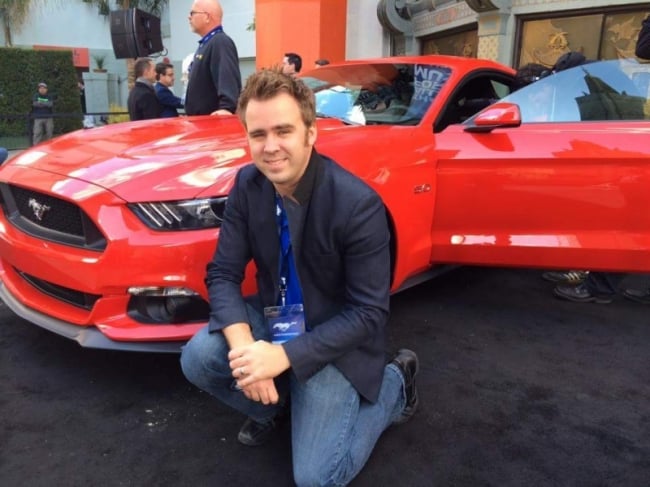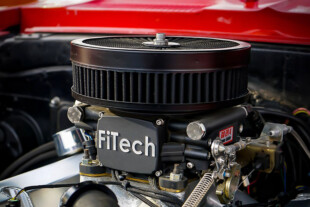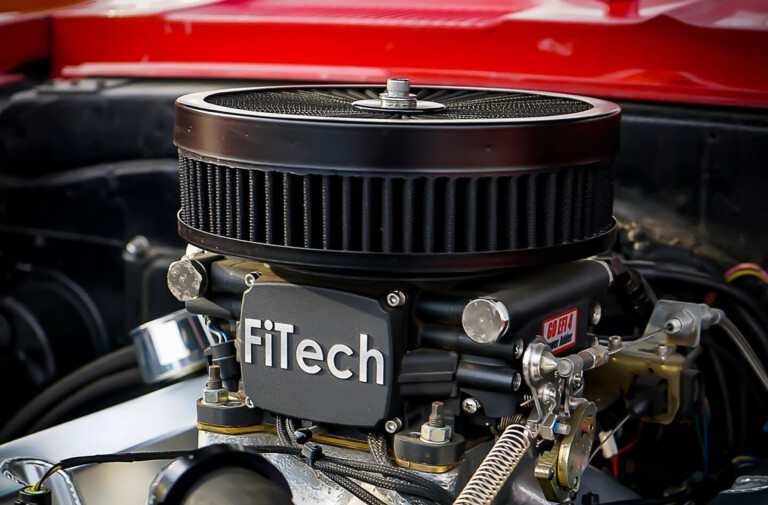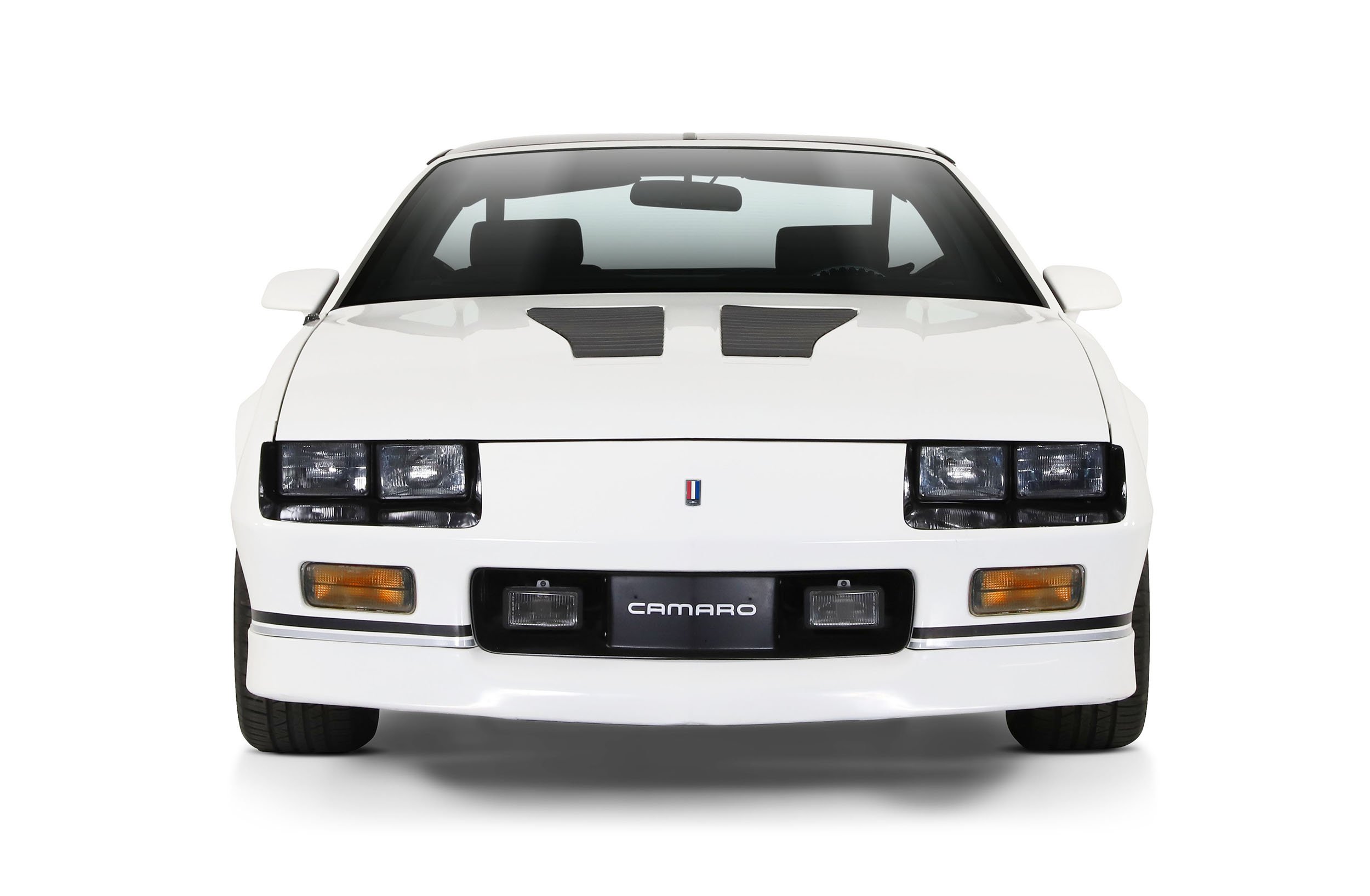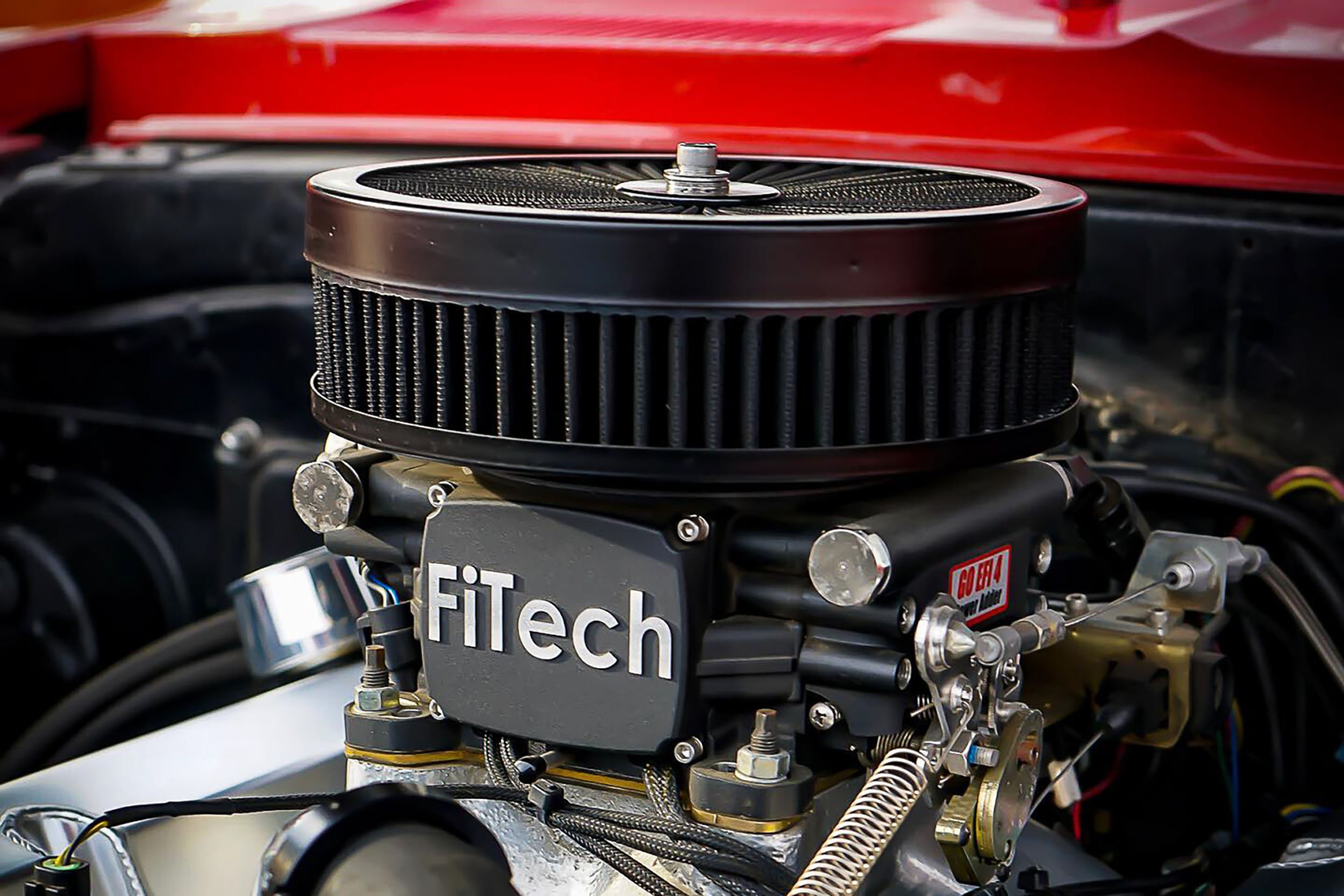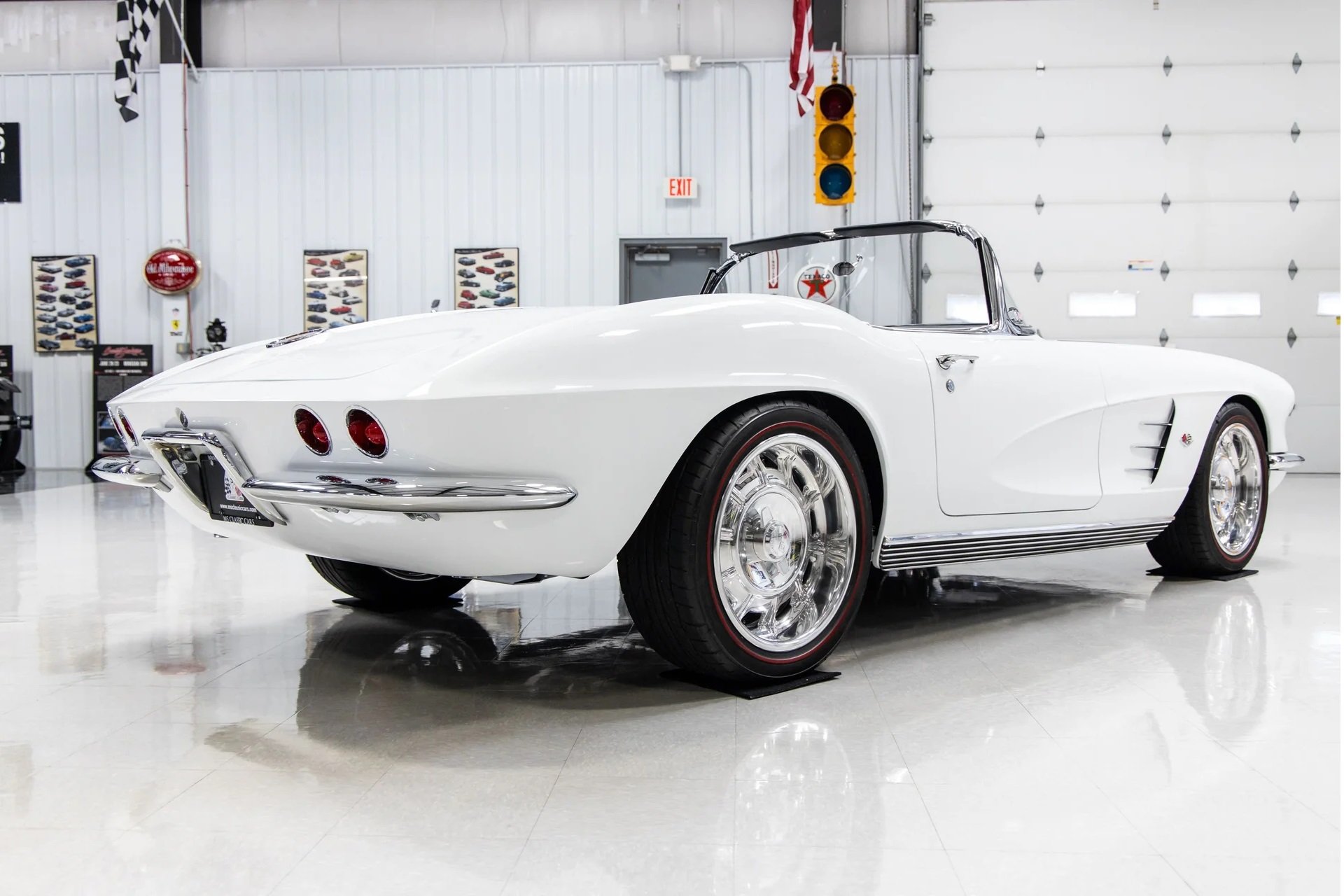This is a tale of two Trailblazer SS trucks: one All-Wheel drive, one rear wheel drive, and both in serious need of a torque converter upgrade. Our resident “TBSS” Project Truck sports upgraded Kooks exhaust and NOS Nitrous, and makes 380 rwhp. Dan Hourigan, the head marketing honcho at Dynojet, owns a turbocharged 4WD Trailblazer. The stock converter was killing both Trailblazer’s performance, both on the track and the street. Follow along as we upgrade these trucks with the latest in torque converters from Yank Converters.
Click here for the full gallery of this install
Yank – Who Dat?
Yank is one of the leaders in the LSX converter world. You can check them out here on their web site.
Dave Meyers, V.P of Operations at Yank, has been working with converters for the last twenty years. In the early years, Dave’s family used to manufacture the machines that made torque converter components. Now Dave is hooked up with business partner Mike Senia, who started the company Yank around fifteen years ago. Mike was an NHRA racer who found it hard to find a good race torque converter and was on a quest to build something better. Thus, Yank was born.
The Tale of Two Test Mules:
Our in-house rear wheel drive version of the Trailblazer SS is our Project “Blackout” that is owned by Eric Schumacher. Equipped with Kooks long tubes, HP Tuners, and a 100 shot of NOS nitrous, our SS is quick, but was being held back severely by the stock converter.
To help combat wheel spin, a pair of 20” Nitto drag radials kept the truck planted. The best time “off the nitrous” has been a 9.00 @ 79.97 mph in the eighth with a 2.07 60 foot. Never mind foot-braking, we couldn’t even spin the tires at the track, and the the truck left so sluggish we felt like we were on dial-up.
Eric Schumacher’s Rear Wheel Drive Trailblazer SS, Nitrous Assisted
The silver, all wheel drive version of the Trailblazer SS we used is owned by Dan Hourigan of Dynojet. Having a different mind set on power adders, Dan opted for a STS turbo system that puts the Precision 67 mm turbo under the SS, along with HP Tuners, K&N intake, and a front mount intercooler. With the boost controller cranked up to 11.5 PSI, Dan managed a best of a 12.8 @ 110 mph with a less than stellar 2.28 60 foot. Again, there was a need for a much improved short time.

Dan Hourigan’s all-wheel-drive, turbo Trailblazer SS
Both Eric and Dan wanted something that was going to perform as well as be acceptable on daily commuting. Kids and wives are part of the equation here for both men. Despite the nitrous and turbos, these TBSS’s are family trucksters.
The Yank Torque Converter
The torque converter in an automatic transmission, is the clutch equivalent to a stick car — it controls the flow and amount of power the engine relays to the transmission and thus wheels. It also limits the ability of a “lockup” RPM, in which the converter will allow the engine to rev to under a braking load. Just like a clutch, you want a converter that not only suits your power levels, but also your driving style.
A higher stall torque converter will multiply the torque of your engine to put more power and torque to the tires. The high stall torque converter will “slip” the engine into a higher rpm range where there is more torque and horsepower. Basically, this will make our Trailblazer SS haul ass!
Yank – the Options
Yank currently offers seven torque converters for the Trailblazer and the 4L70E transmission: from an entry-level bolt-in converter to all-out aggressive 4,000 rpm stall units. “The LS market is what we specialize in and found in ’98 that the LS vehicles took well to converters. When we saw the Trailblazer SS come online, we knew it was going to be a good market, since they put the LS2 Corvette engine in it”, Dave Meyers of Yank says.

Converters come with new Torrington bearings
For our nitrous Trailblazer and our Turbo Trailblazer, we selected the SSTB-3600 – featuring a 245-mm diameter design that features a very high stall torque ratio – 3,600-RPM – along with a 2.5 S-T-R Lightweight Billet Cover. According to Yank, this converter is designed to give you great performance and still maintain great everyday drivability, and it will even work with nitrous.
It all starts with a hardened input shaft and turbine splines that come standard, new torrington bearings are utilized, along with a one-piece flanged impeller hub which gets roller burnished for long seal and bushing life.

Converters come with a one piece, billet front cover to prevent ballooning after extreme heat and pressures
The front cover is a one-piece billet steel front cover, and is custom made by Yank to prevent ballooning under extreme heat. That works with the internal furnace-brazed turbines, and our particular model has double-finned drive turbines – adding additional strength for vehicles that need it – like our nitrous equipped truck. Finally, you’ll find an extra-wide oversized lockup clutch in the Yank, adding extra strength for our lockup-style converter. “The LS2 doesn’t really come alive to around 3,000 RPM so the quicker you can get it up in the power band and the more torque multiplication to help get it off the line, makes a BIG difference”, Dave says.

Furnace brazed throughout and all 245 mm models have double finned drive turbines for additional strength
Selecting Yank’s Seven Levels of Trailblazer Converters
When going over their list of converters, we asked Dave what the difference was between a forced induction vs nitrous vs naturally aspirated converter and also what to look for when towing a vehicle:
“The components are similar in some forms, but when building a naturally aspirated converter you can give them more stall because they don’t have to worry about blowing through the converter, meaning too much converter for the motor because you can’t spin the motor high enough to keep it locked up.”

One piece flanged impeller hub which gets roller burnished for long seal and bushing life
“In a turbo application you can give someone a little more stall to let them build some boost. But when they do get up on the boost, you don’t want to give them too much converter because if they’re making big boost on the top end, it won’t allow for enough RPM drop on the gear change.”
Dave continued, “For a nitrous converter it is basically the same thing. You have to give someone a tight enough converter so when they drive the truck around on motor, it runs ok, but when you spray it, you need to factor for more input torque the motor is making.”
“For a towing application you go for a converter from the Pro Trailblazer series that we can offer in a higher stall speed, but is a larger diameter converter with a larger surface area on the clutch. Now with the larger surface area, the clutch can handle the added strain from the load and can keep the transmission cool.”

All Yank converters come with hardened input and turbine splines standard.
“When selecting a converter for a customer, the main factors we look for is the maximum horsepower the vehicle will be making, gear size, maximum rpm, and towing a vehicle.”
Here are the TBSS Convertors and the basic info:
TRB2600 Torque Converter 4L70E LS2 – 278mm, 2600 stall, 2.10 STR. This Converter is their entry level Trailblazer SS converter for someone looking for a mild upgrade to compliment their bolt ons. Stock Towing capacity.
TRB3000 Torque Converter 4L70E LS2 – Still 278 mm, but with a higher 3000 rpm stall. STR is increased to 2.21 to account for its near 99% efficiency. This converter is a modified Trailblazer SS 2600. Being so, it shares the stock-like appearance, super-high efficiency, and better towing capacity of its lower stall brother. Light duty Towing capacity.
YANK SC 3000 4L70E LS2 – A smaller 258 mm converter that is designed for extreme horsepower through forced induction. Maintains a 3000 stall but with a higher, 2.4 STR.
PTB3200 Torque Converter 4L70E LS2 – The rolex of Yank’s converter line is their ultimate street/strip converter. It’s 258 mm in diameter with a 2.3 STR. It’s designed to give you the added performance, but still maintain the stock towing capacity. Additionally, it has a lightweight billet front cover and will work with nitrous.

Extra wide, oversized lockup clutch material to handle the added abuse.
SSTB3600 Torque Converter 4L70E LS2 – This is the converter we chose to use in both the Trailblazers. Size is reduced to a smaller 245 mm frame converter and has a very high stall torque ratio of 2.50. It comes with a 3600 stall and the lightweight billet cover. This converter is designed to give great performance and still maintain great everyday drivability. This will also work well with nitrous.
SSTB4000 Torque Converter 4L70E LS2 – Still the smaller 245 mm frame with an even higher stall torque ratio, being a 4000 stall and a 2.60 STR. This converter is the big brother of the 3600 with all of the same features, including the lightweight billet cover. This converter is designed as a street/strip converter similar to the SSTB3600. This will also work with nitrous.
PTTB4000 Torque Converter 4L70E LS2 – The last converter in their line up is the most mild application, designed for naturally aspirated Trailblazers. It is 245 mm in size with a mild STR of 2.25 and an overall stall of 4000 RPM. It will pull harder during mid range and top end acceleration and have a higher shift extension. It will also drive a little looser due to its lower STR
Installing the Converter and Transmission Cooler on our rear-wheel-drive Trailblazer SS
When it came to installing the Yank converter on our Nitrous SS, our only choice was Ryne Cunningham of Cunningham Motorsports. Ryne has made a name for himself in the LS market and works on virtually nothing else.
Yank supplies a great instruction manual that is also downloadable from their site. “Probably the most important part is to pre-fill the converter with oil, because if you fire it up dry, there’s bearings that will fail if they don’t see lubrication immediately”, Dave says.

First step is to remove the exhaust. The headers can remain installed.
With the SS on a lift, the first step is to remove the Corsa exhaust and driveshaft. A tail shaft plug is a useful tool to have so your transmission fluid doesn’t end up on the floor, or you can opt for a fresh fill like we did.
The starter is a little tricky to get to and needs to be removed to gain access to the flex plate bolts. Disconnect the battery so the starter leads do not arc to the chassis on removal.

The red dot marks one of the three flex plate bolts that will need to be removed before dropping the transmission, rotate the crank pulley to get to each bolt.
To make your life easier when gaining access to the flex plate bolts, you will need to remove the starter. There are three bolts that hold the converter to the flex plate that you will remove. Next, you will want to remove the transmission mount to allow the transmission to lower enough to allow access to the transmission wiring harness on the top of the case. Get yourself a huge extension, impact gun, and some swivel sockets. This will decrease the amount of time and cut up hands when it comes to removing the transmission mounting bolts. Now slide the transmission back and down, we are now almost half way done

Though a swivel and long extension isn’t needed for the bottom bolts, they aid in removing the top bolts due to the tight fit
Unplug the transmission wiring harness on top of the case so you don’t rip any lines, verify no other connectors need to be removed.

While dropping out the transmission, make sure all lines and wires are clear of the case
Now, before reinstalling the converter, we filled it with one quart of transmission fluid, and repeated the entire installation process in reverse order. It took about an hour for the Cunningham team to re-install the transmission, bolts, and wiring.

Make sure you add one quart of fluid before pushing the converter back onto the input shaft
Finally, before we were ready to hit the track, we opted to install a PCMForLess Direct Fit Transmission Cooler to ensure our higher-stall converter would not overheat.
The PCMForLess kit comes with all needed hardware and is a direct fit for a Trailblazer SS.
We chose the brake duct mount, though they are also offered in a front mount version. The kit is a plug and play affair for the Trailblazer SS as it comes with all the proper brackets and line lengths. The only modification you need to make is to make a small cut to allow for clearance in your fender liner.
Removing the stock air box will help you gain access to the factory transmission lines so you can mate them to the supplied AN counterparts. PCM says that we should see around a 40 degree drop in transmission temperatures, keeping life in our drivetrain components.
Transmission cooler lines from the cooler will directly intersect your stock lines.
That wrapped up our installation, but we still had to break-in the converter. According to Yank, all of their converters have a special clutch lining material that requires a special break-in procedure. This procedure consists of driving the converter at normal speeds with no wide open throttle starts, or brake stalling the converter, for approximately 150 miles.
Transmission cooler installed, note the slight fender liner modification that is required
Track and Street Testing: Nitrous TBSS
Our driving impressions showed a massive improvement in the “seat of the pants” feel. The Yank converter allowed us to get into the power range almost immediately, pouring the power to the Nitto 20-inch drag radials. Where as before we couldn’t launch the truck hard, we could now slam the throttle off the brake for an unsuspected and nearly neck snapping launch.
We then took a trip to Irwindale Dragstrip to verify our impressions. After a few test runs to find our launch RPM sweet spot, we pulled to the line with anticipation. Holding the throttle at 3,000 RPM, we left the starting line hard, and dropped 2-tenths in 60-foot – running a 1.80 on the way to a 8.42 in the 1/8 mile, an over 6 tenths improvement.
Finally we had a chance to take advantage of the 20″ Nitto drag radials that helped harness the 1.8 60-foot times

Before and after 1/8th mile testing on the converter
In the ¼ mile, that is close to a second dropped off our E.T. from only the Yank torque converter. That wrapped up our installation and test, and needless to say, this is one of the best bang for the buck upgrades we’ve done so far.
Track and Street Testing: Turbo TBSS
Dan Hourigan bought his 2006 Trailblazer with the hopes of being impressed with AWD launches. However, when he slammed his foot to the floor, he wasn’t that pleased, even with 395 rear wheel horsepower. “The truck felt like someone had thrown a boat anchor behind it, explained Hourigan. “A stock 425 HP Jeep Grand Cherokee SRT8 would flat leave it standing still in a light to light drag race.”
Dan Hourigan’s all-wheel-drive, turbo Trailblazer SS
Dan Hourigan’s all-wheel-drive, turbo Trailblazer SS
Stock, the truck went 14.6, but he added a few upgrades including tuning, air filter, and electric fans, and tripped a 14.2 at 97 mph. It wasn’t enough for Dan: “My next round of modifications included an STS Turbo Kit with an upgraded 67 mm ball bearing turbo, front mount intercooler, and adjustable boost controller. After countless hours of tuning, I was ready to hit the track, and with a little Torco race fuel in the tank and 11.5 psi, my TBSS ripped off some 12.8’s @ 110 mph.”
There was a problem. 60’ times were less than stellar with a 2.28. It was time for a convertor. “I determined that a torque converter would be the best solution for my dilemma. A quick phone call to Dave at Yank lead to a conversation about my goals with the vehicle, and after answering some questions, the seed was planted,” explained Dan.
Note the All Wheel Drive transfer case on Dan’s transmission
“I certainly didn’t want something that was annoying for street use, I mean after all, my wife needed to drive this thing as well.” Dave recommended one of their YANK SC 3600 converters, stating that it would offer very compliant, stock like qualities, but allows Dan to get “up and out” quicker and harder than the stock converter.
After performing daily driver duties through the summer, he was very pleased with the Yank converter from a drivability standpoint, as well as the performance gains that were realized. He was also experimenting with my launching technique on the streets, and I was convinced that if I could replicate this technique at the track, he’d have some 11 second time slips! Back at Las Vegas Motor Speedway, it was time to test the new combo. Dan’s method is to drive around the water box since it’s AWD, and then just leave from the foot brake.
Stock versus Yank converter. Though they look almost the same, they function completely different.
“I staged the truck at the starting line, engaged in my pre-launch sequence, and left the line a bit harder. On the return road I stopped to pick up my time slip, and to my surprise, I was rewarded with a 12.2 @ 112 mph. My 60’ time dropped to 1.94, and I backed it up with two other runs that were very consistent with my new benchmark.”
This was a substantial improvement in 60-foot times from the Yank converter, but Dan says there is more performance to be had: “The best time of the year to race in Las Vegas is in the late fall, winter, and early spring, and they’ll be reopening in late January. You can bet that when they reopen, I’ll be there trying to knock out some 11 second time slips. Until then, my AWD TBSS is a blast to drive on the street, and I’ll be enjoying every “Yank out of the hole”.


